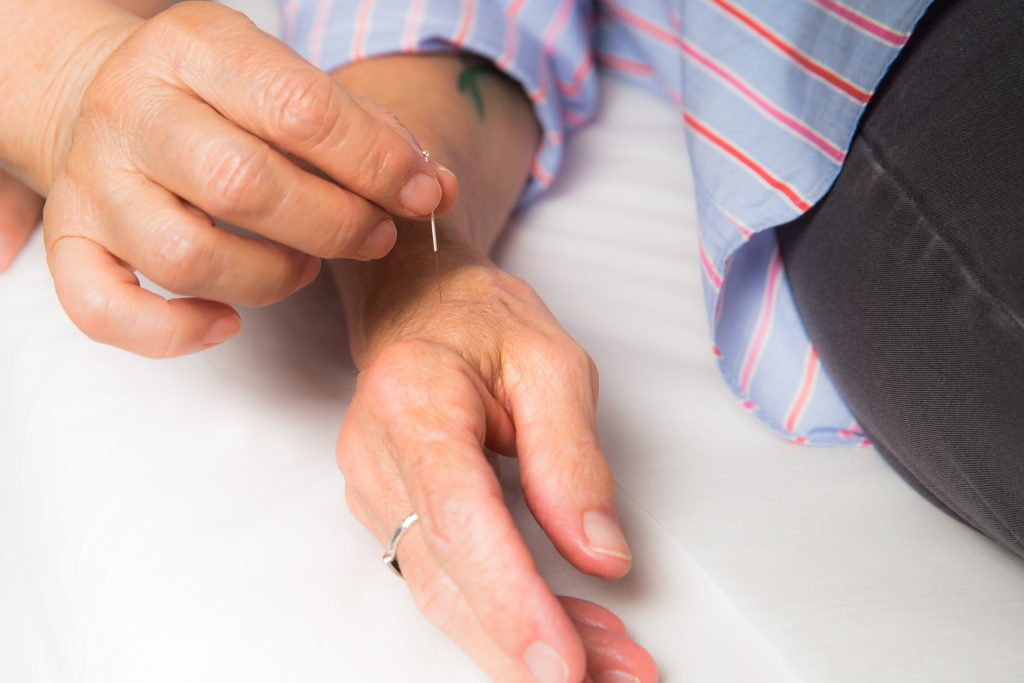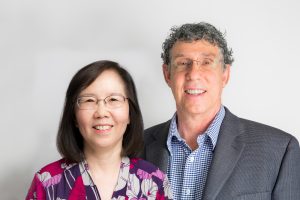Pain is the number one reason people come to our acupuncture clinic in Delaware and the number one reason people seek out acupuncture throughout the United States.
Acupuncture is recognized by the National Institute of Health (NIH) and the World Health Organization (WHO) to be an effective treatment for a wide variety of medical problems.
The American College of Physicians recommends acupuncture for patients who do not get sufficient relief from standard medical treatment.
Can Acupuncture Reduce My Pain?
Here are some of the most common questions we get from first-time callers to our clinic, and our answers:
- Can acupuncture reduce my lower back pain? YES.
- Can it reduce my neck pain? YES.
- Can it reduce my migraine headache pain? YES.
- Can it reduce my trigeminal neuralgia pain? YES.
- Can it reduce my neuropathy pain? YES.
- Can it reduce my plantar fasciitis pain? YES.
- Can it reduce my sciatic nerve pain? YES.
- Can it reduce my menstrual cramps pain? YES.
The reason for these questions is obvious. Nearly nine people out of ten will have moderate to severe pain problems at some point during their lives, with low back pain being the most common. And no one wants to live with pain.

Use of opioid medicines for pain is now an ever-accelerating and severe crisis in the United States, causing the destruction of families, destruction of jobs and even death.
This opioid overuse crisis makes acupuncture, like other non-opioid pain treatments, even more important.
The Effectiveness of Acupuncture
A recent scientific review article stated this:
“Despite supportive evidence of its effectiveness, this ancient approach is often misunderstood, and may still be underused in mainstream practice. A critical review on its effectiveness and practice integration, and mechanisms of action is essential to the medical community that is continuing to seek non-opioid therapies for chronic pain.
“Mounting evidence supports the effectiveness of acupuncture to treat chronic low back, neck, shoulder, and knee pain, as well as headaches. Additional data are emerging that support the use of acupuncture as an adjunct or alternative to opioids, and in perioperative settings.
“Findings related to its mechanisms of action include transient receptor potential cation channel vanilloid 1 activation in the periphery, microglial suppression in the cerebral cortex and spinal cord, and regulation of cytokines and other key inflammatory factors in the spinal cord. Incremental integration of acupuncture into pain medicine practices and training programs continues to grow.”
Is Acupuncture Just a Placebo?
This is a question we also get a lot at our clinic, especially from skeptics.
I usually answer this by citing the work of the late Bruce Pomeranz, PhD, who was a professor at the University of Toronto from 1979 until his death in 2013. He received his doctoral degree from Harvard Medical School in 1967. He published over 66 papers on acupuncture research in referenced journals (see a few below), and contributed chapters to eight acupuncture textbooks.
This brief except from an interview he did years ago about his early work on the mechanism of acupuncture pain relief explains how he was able to prove its efficacy scientifically enough to silence all but the most resistant of critics.
Alternative Therapies: How would you describe yourself?
Bruce Pomeranz: I’m a neuroscientist whose job is to disprove. Karl Popper, a famous philosopher of science, said you never prove anything, but you try to disprove your hypothesis. You do everything possible that any skeptic could think of to show that the hypothesis doesn’t work; in spite of that, if it still survives, then you’re okay.
AT: Is that what happened with your acupuncture-endorphin theory?
Pomeranz: Yes. I have spent 20 years disproving my hypothesis. Disproving it! The real impact came after we accumulated 16 lines of evidence. I’m not talking about 16 experiments—there could have been 2000 experiments. Sixteen lines mean there were 16 different kinds of experiments that were based on 16 different assumptions. The chances of all 16 having the same error and converging on the same answer is highly unlikely.
According to my hypothesis, acupuncture stimulates peripheral nerves that send messages to the brain to release endorphins (morphine-like compounds); these endorphins block pain pathways in the brain. In testing our acupuncture/endorphin theory, one line [of evidence) was based on measurement of endorphin levels. Endorphin levels went up, but that could have other meanings. Other things were also going up. How do you know that it wasn’t just stress that raised the endorphins? So that one line of evidence, though very compelling, doesn’t prove anything.
We got another line of evidence [by asking]: What happens when you block the endorphins? We used naloxone, a powerful endorphin blocker, but you can argue that it’s a drug and has side effects we don’t know about. It may be blocking something else, not the endorphins; but naloxone worked, so we had two lines of evidence. They’re very compelling, but they don’t yet prove a darn thing. You have to have many lines, all of them independent.
In the subsequent years, we accumulated these 16 different lines of evidence all supporting our hypothesis. So my conclusion is that we have more evidence in favor of the acupuncture-endorphin hypothesis than we have for 95% of conventional medicine.”
Acupuncture at Chrysalis Natural Medicine Clinic

The Chrysalis Natural Medicine Clinic is a family-owned integrated holistic health center. We have been in operation since 1986.
Alan and Naixin (Nai-shing) Tillotson are both licensed Acupuncturists, trained in the formulation of safe nontoxic Chinese medicine treatments and Acupuncture treatment according to the pattern differentiations of Traditional Chinese Medicine.
References
Cheng R. McKibben L, Roy B. Pomeranz B. Electroacupuncture elevates blood cortisol level in naive horses; sham treatment has no effect. Int J Neurosci. 1980. 10: 95-97.
Cheng R. Pomeranz B. Electroacupuncture analgesia could be mediated by at least two pain-relieving mechanisms; endorphin and non-endorphin systems. Life Sci. 1979. 25:1957-1962.
Godfrey CM, Morgan P. A controlled–trial of the theory of acupuncture in musculoskeletal pain. J Rheumatol. 1978. 5: 121-124.
Goldstein A, Hilgard ER. Failure of the opiate antagonist naloxone to modify hypnotic analgesia. Pros Natl Acad Sci. 1975. 72:2041-2043..
Kim KC, Yount RA. The effect of acupuncture on migraine headache. Amer J Chin Med. 1974.2: 407-411.
Lee PK, Andersen TW, Modell JH, Saga SA. Treatment of chronic pain with acupuncture. JAMA. 1975. 232: 1133-1135.
Man SC, Baragar FD. Preliminary clinical study of acupuncture in rheumatoid arthritis. J Rheumatol. 1974. 1: 126-129.
Peng ATC, Behar S. Yue SJ. Long term therapeutic effects of electroacupuncture for chronic neck and shoulder pain-a double-blind study. Acupunct Electrcther R es Int J. 1987. 12:37-44
Petrie JP, Langley GB. Acupuncture in the treatment of chronic cervical pain. A pilot study. Clin Experimental Rheum. 1983. 1: 333-335.
Richardson PH, Vincent CA. Acupuncture for the treatment of pain: A review of evaluative research. Pain. 1986. 24: 15-40.
